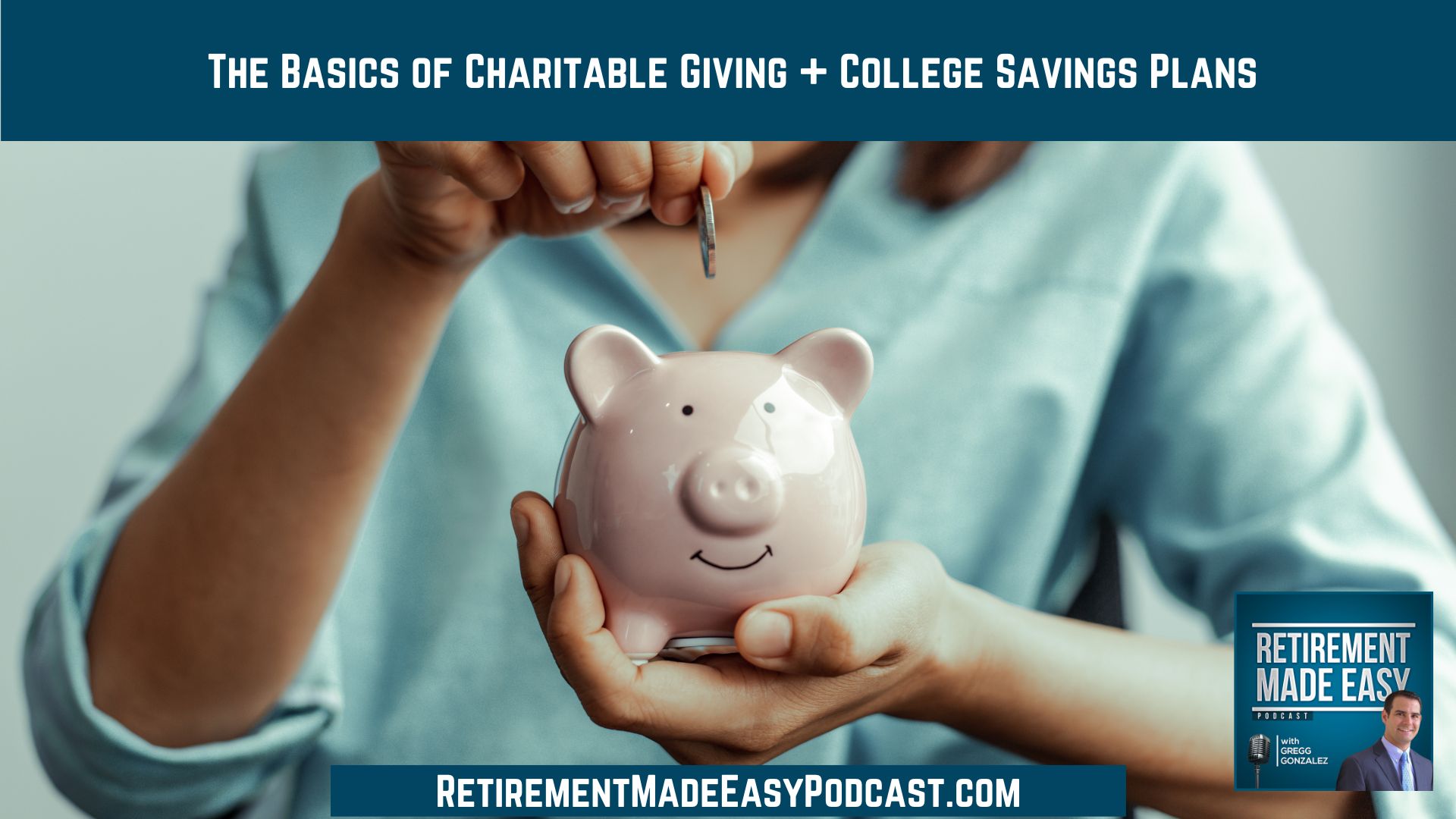
Do you have a plan for charitable giving in retirement? What about saving for a grandchild’s college education? Retirement planning goes far deeper than covering your basic bills in retirement—it’s about all of the goals you have. In this episode of the Retirement Made Easy podcast, I’ll cover two things I’m often asked about: charitable giving and college savings plans. Check it out!
You will want to hear this episode if you are interested in…
- [3:21] Check out the resources at RetirementMadeEasyPodcast.com!
- [5:28] The basics of college savings plans (529 plans)
- [8:42] The alternative options to a 529 plan
- [11:16] How to determine your goals for retirement
- [12:32] The basics of charitable giving in retirement
- [16:22] Learn about donor-advised funds
- [18:32] How to properly name your beneficiaries
The basics of college savings plans (529 plans)
Are you familiar with 529 plans? I have clients with young grandkids who have set a goal to help pay for their college education. 529 plans are the most popular way to save money. Depending on the state you live in, there may even be a state income tax deduction on your contributions. In Missouri, the maximum deduction is up to $16,000 for a couple married filing jointly. Someone filing singly can contribute up to $8,000 in a 529 plan per year.
The real beauty of a 529 plan is that the money grows tax-free as long as it’s used for qualified education expenses. Plus, you get to determine how and when the money is distributed for education expenses (K-12, trade school, or bachelor’s program). Qualified expenses can include books, tuition, and even laptops.
What happens if the money isn’t used for college? What are the alternatives to a 529 plan? Listen to hear the different options.
Charitable giving in retirement
Once you turn 72, you have to take a required minimum distribution (RMD) from your retirement savings. As you get older, you have to take a little bit more. For example, when you’re 80, you have to take 4.95% of your IRA or 401k balance. So if you have $1 million in your IRA, you’ll have to take an annual RMD of $49,500 and pay income taxes on that amount.
But you can take part of or all of an RMD and send it directly to a church or charity that you’re passionate about—and you won’t be taxed on that money. If you wanted to contribute the entire $49,500, you can do a qualified charitable distribution. On your tax return, you report the distribution and you will not be taxed on it. Neither will the church or charity.
Learn about donor-advised funds
Donor-advised funds are becoming popular because of the 2017 Tax Cuts and Jobs Act, where the standard deduction increased to $29,500. If you want to give sizable charitable contributions, you can take that money and place it in a fund. You can itemize that as a charitable gift in that year.
The money sits in the fund and you get to determine how and when the money is distributed—but it must be given to a 501C3. You can also invest the money in the fund in mutual funds, ETFs, stocks, etc., and watch it grow tax-free.
How do you properly make a church or charity the beneficiary of an account? Listen to find out!
Resources & People Mentioned
Connect With Gregg Gonzalez
- Email at: Gregg@RetireSTL.com
- Podcast: https://RetirementMadeEasyPodcast.com
- Website: https://StLouisFinancialAdvisor.com
- Follow Gregg on LinkedIn
- Follow Gregg on Facebook
- Follow Gregg on YouTube



